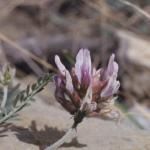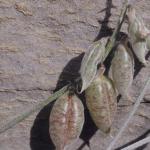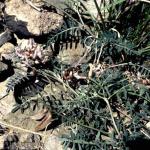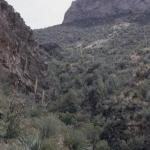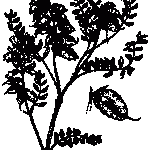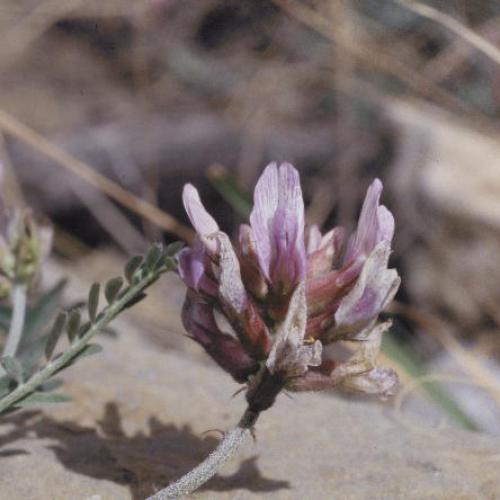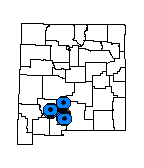Astragalus castetteri (Castetter Milkvetch)
| USFWS | State of NM | USFS | BLM | Navajo Nation | State Rank | Global Rank | R-E-D Code | NMRPTC Status | Strategy Status |
|---|---|---|---|---|---|---|---|---|---|
| S3 | G3 | 1-1-3 | R | SS |
| Overall Conservation Status | Documented Threats | Actions Needed |
|---|---|---|
| MODERATELY CONSERVED | No Information |
Surveys to document status, abundance and threats |
Astragalus castetteri - walls of fruits membranous-papery, almost transparent, 1-1.6 cm in diameter; flowering in April-May; Doña Ana and Sierra counties, New Mexico.
Astragalus hallii var. fallax - walls of fruits rigidly papery, not at all membranous; 6-12 mm in diameter; flowers May onward; western New Mexico.
Astragalus castetteri is somewhat similar to A. flexuosus var. greenei, which also has connate stipules. This variety is distinguished by its turgid fruits, smaller flowers (7-11 mm), vestigial or no stipe on pod, and different range (north- and west-central New Mexico and adjacent Arizona).
Barneby, R.C. 1964. Atlas of North American Astragalus. Memoirs of the New York Botanical Garden 13:1-1188.
Isely, D. 1998. Native and naturalized Leguminosae (Fabaceae) of the United States (exclusive of Alaska and Hawaii). Monte L. Bean Life Science Museum, Brigham Young University, Provo, Utah.
*New Mexico Native Plants Protection Advisory Committee. 1984. A handbook of rare and endemic plants of New Mexico. University of New Mexico Press, Albuquerque.
For distribution maps and more information, visit Natural Heritage New Mexico

